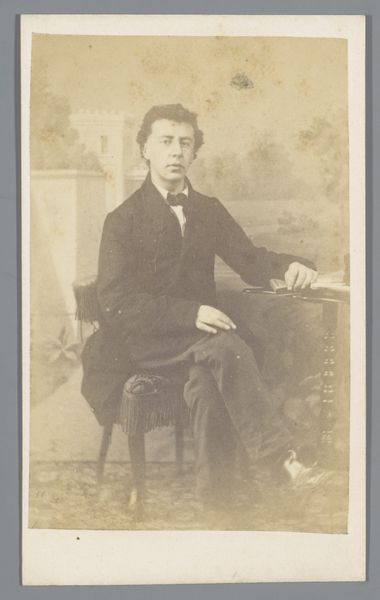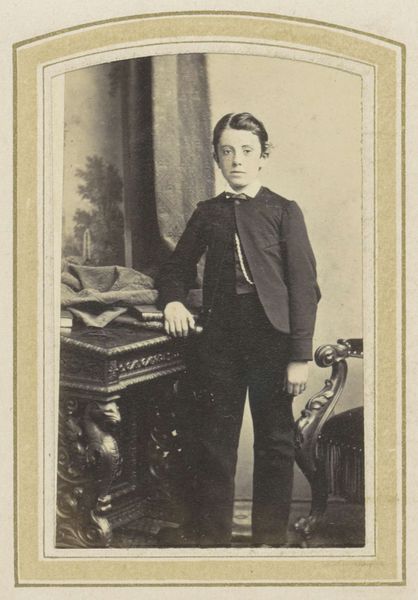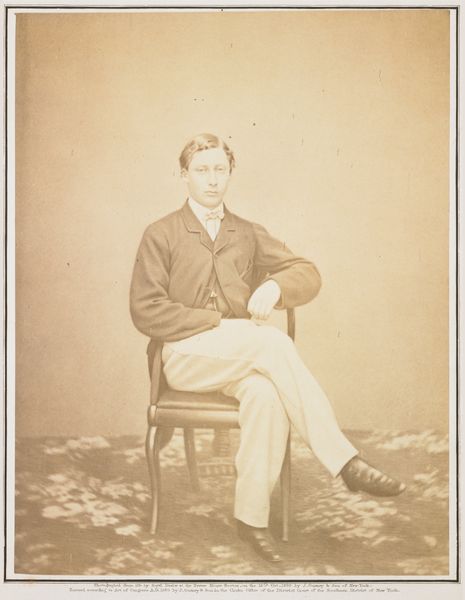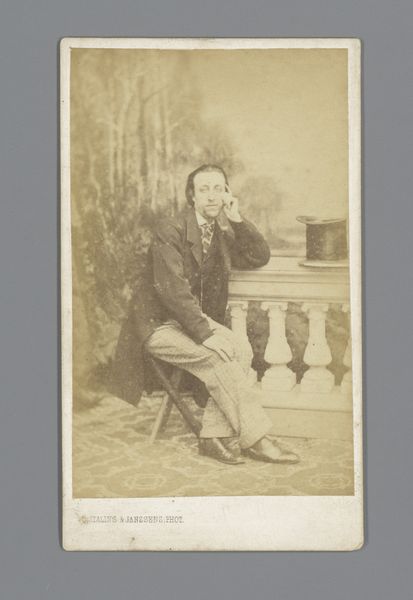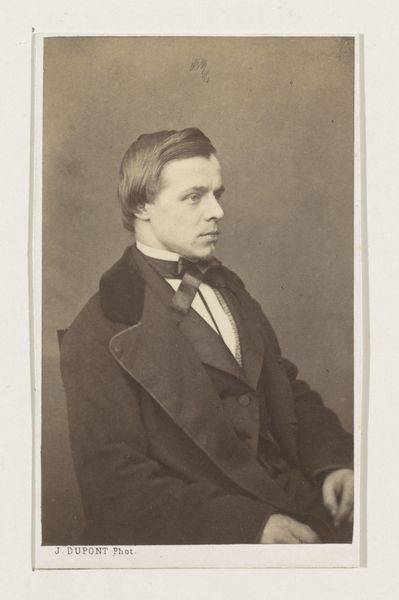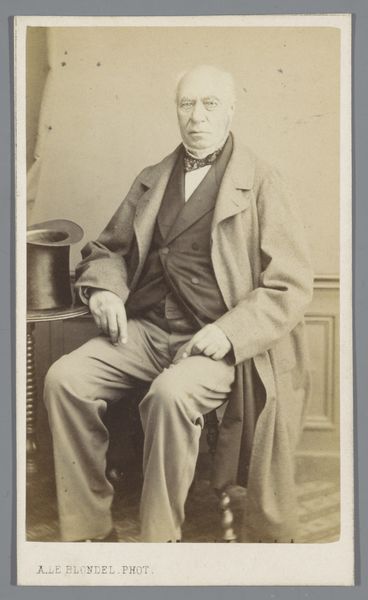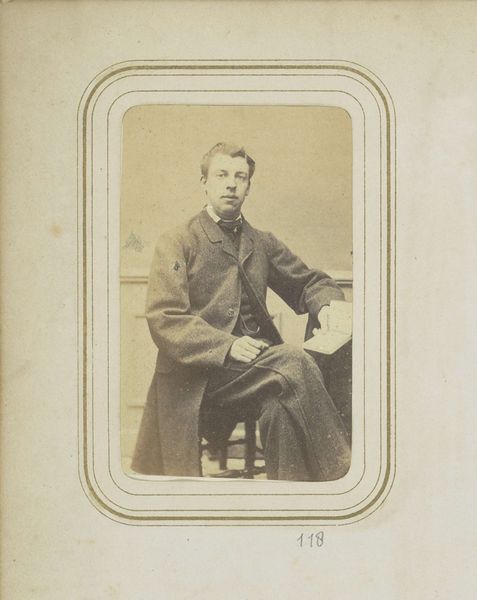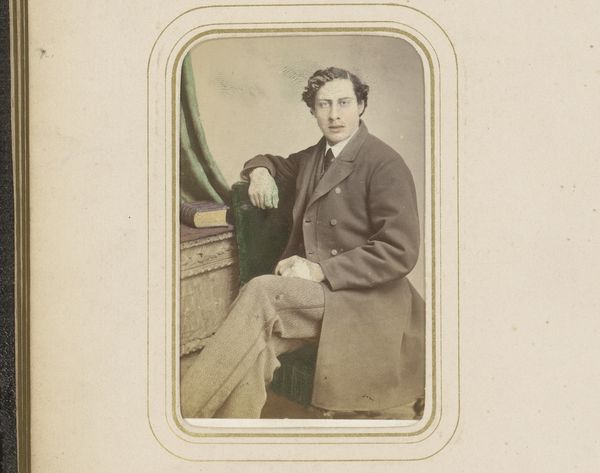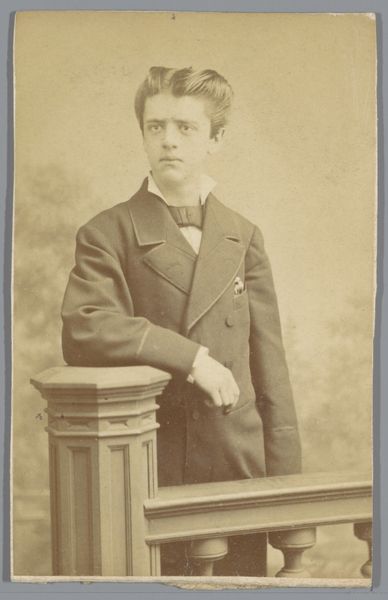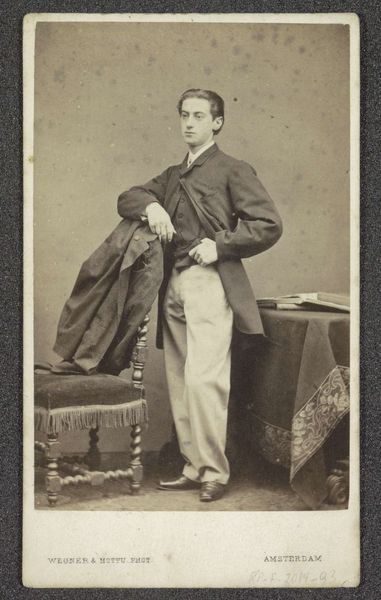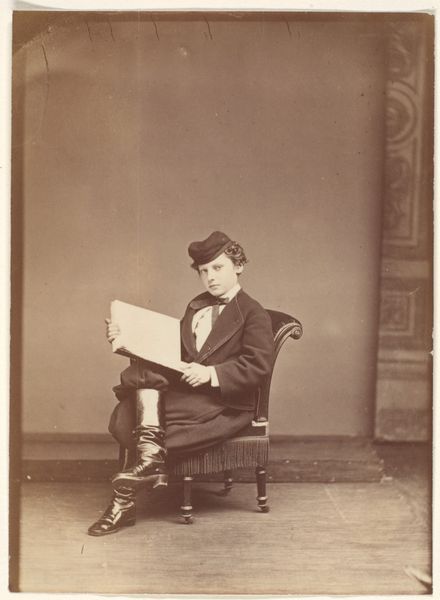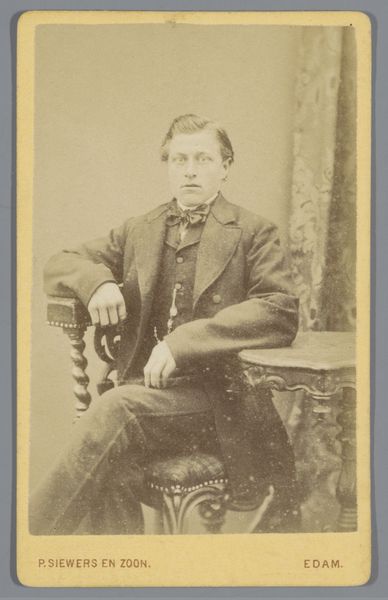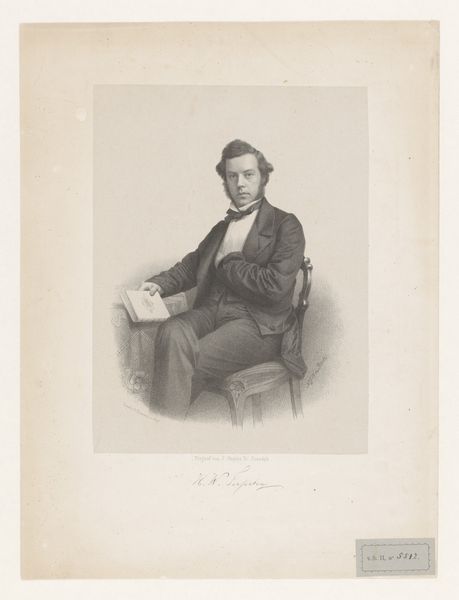
daguerreotype, photography
#
portrait
#
daguerreotype
#
photography
#
historical fashion
#
19th century
#
genre-painting
#
realism
Dimensions: height 104 mm, width 62 mm
Copyright: Rijks Museum: Open Domain
Curator: Here we have a daguerreotype by Loescher & Petsch, made sometime between 1863 and 1870. It's titled "Portrait of an Unknown Young Man with a Book." Editor: Wow, he looks incredibly…intense. Like he knows all the secrets of the universe and is judging me for not knowing them too. I immediately fixated on the seriousness of his expression; you rarely find that sort of deep melancholy anymore. Curator: Given the photographic process of the time, that solemnity may be due to the long exposure times. Sitters had to remain still for extended periods, which naturally led to more composed expressions. But also, consider the context—the rise of the bourgeoisie and their desire to project an image of respectability and intellectualism. A book was a powerful symbol of both. Editor: That ornate table and heavy drapery in the background certainly speak to that desire for status. He’s presenting himself as learned, affluent…but there's a hint of unease in his eyes. I see not just ambition, but maybe some fear too, like he's trying to embody this role. Curator: Indeed. And it's fascinating to consider the materiality. A daguerreotype was a unique object, not easily reproduced like later photographic prints. This object itself would have held significant value. It’s both a physical and social artifact, speaking volumes about the production of identity in that era. We might consider the consumption patterns implied by commissioning such a portrait. Who was he intending to impress or reach? Editor: And the clothes he's wearing; even in this sepia tone, you can tell the fabric has heft to it. It isn’t casual wear, it's a conscious construction of self through very real, tangible things. You know, this really does feel like a stage set, the young man centered as if under a spotlight with everything carefully chosen to highlight and hide different facets of the portrayed. It works masterfully. Curator: Yes, everything from the book to the fashionable suit contribute to that performative aspect. Analyzing those material choices gives us real insight into the values of that society, beyond just aesthetic pleasure. Editor: He doesn’t smile. Perhaps because smiling wasn't fashionable. Maybe because the process took too long. Yet his stoic seriousness almost tells a truer tale: how to look serious, how to appear composed and wise was what mattered the most at that period. This image reflects that sentiment, for better or for worse. Curator: Exactly. It demonstrates the very material constraints and conditions involved in constructing and presenting a persona, both historically and artistically.
Comments
No comments
Be the first to comment and join the conversation on the ultimate creative platform.
